Chemistry Tutorials and Quizzes
Interactive Tutorials and Animations (Wisconsin Online)
-
A Biological Example of Water Solubility
Technician: Timothy Gremore Date: 1/13/2004Author: Jill Larson - Northeast Wisconsin Technical College
Description: In this animated object, students examine the role that the solubility of water plays in various biological functions. -
Absolute Zero Temperature
Technician: Pam Kuepper Date: 3/3/2005Author: Dr. Martin McClinton - Brevard Community College (Florida)
Dr. Miriam Douglass - Fox Valley Technical College
Description: Learners view illustrations showing the direct dependence of the volume of a gas on temperature and consider the relationship between the Kelvin and Celsius temperature scales. -
Acid-Base Reactions
Technician: Dean Lodes Date: 12/10/2004Author: Dr. Martin McClinton - Brevard Community College (Florida)
Dr. Miriam Douglass - Fox Valley Technical College
Description: Learners view several movie clips that demonstrate the use of an indicator to follow the neutralization reaction that occurs when an acid and a base are mixed. Students test their knowledge in a series of questions. Immediate feedback is given. -
Acids & Bases
Technician: Timothy Gremore Date: 1/13/2004Author: Jill Larson - Northeast Wisconsin Technical College
Description: Students read different definitions of "acids" and "bases." In an interactive exercise, they identify if a substance is an acid or a base. -
Atomic Structure and Ionic Bonding
Technician: Timothy Gremore Date: 1/13/2004Author: Jill Larson - Northeast Wisconsin Technical College
Description: In this animated object, learners examine the chemistry behind table salt. -
Atomic Symbols, Atomic Numbers, and Mass Numbers
Technician: Pam Kuepper Date: 11/29/2004Author: Dr. Martin McClinton - Brevard Community College (Florida)
Debbie McClinton - Brevard Community College (Florida)
Dr. Miriam Douglass - Fox Valley Technical College
Description: Learners read definitions of atomic symbols, atomic numbers, and mass numbers and then answer questions about the number of neutrons, protons, and electrons in select elements. -
Atomic Weight
Technician: Pam Kuepper Date: 12/8/2004Author: Dr. Martin McClinton - Brevard Community College (Florida)
Debbie McClinton - Brevard Community College (Florida)
Dr. Miriam Douglass - Fox Valley Technical College
Description: Learners read the definition of atomic weight and obtain the weights of elements by viewing the Periodic Table and charts that list atomic weights by name or symbol. -
Balancing Oxidation-Reduction Equations
Technician: Pam Kuepper Date: 6/3/2005Author: Dr. Martin McClinton - Brevard Community College (Florida)
Debbie McClinton - Brevard Community College (Florida)
Dr. Miriam Douglass - Fox Valley Technical College
Description: In this animated activity, learners examine the terms "half-reaction," "oxidizing agent," and "reducing agent" and follow five interactive examples to balance equations for oxidation-reduction reactions. Three problems are provided as a self-check. -
Boiling Point of a Liquid
Technician: Pam Kuepper Date: 1/25/2005Author: Dr. Martin McClinton - Brevard Community College (Florida)
Debbie McClinton - Brevard Community College (Florida)
Dr. Miriam Douglass - Fox Valley Technical College
Description: Learners examine how the boiling point increases with increasing pressure. An example from industry is given. -
Boyle's Law
Technician: Timothy Gremore Date: 1/13/2004Author: Jill Larson - Northeast Wisconsin Technical College
Description: In this interactive object, the learner examines how pressure and volume relate to each other. -
Calculating Formula Weight and Molecular Weight
Technician: Dean Lodes Date: 11/9/2004Author: Dr. Martin McClinton - Brevard Community College (Florida)
Debbie McClinton - Brevard Community College (Florida)
Dr. Miriam Douglass - Fox Valley Technical College
Description: In this interactive object, learners calculate formula and molecular weights by working through five examples and two problems. -
Calculating Gas Density from Standard Molar Volume
Technician: Pam Kuepper Date: 2/23/2005Author: Dr. Miriam Douglass - Fox Valley Technical College
Description: Learners calculate gas density from the standard molar volume and observe how the density increases with the increasing molecular weight of the gas. -
Calculation of Atomic Weight from Isotopic Composition
Technician: Pam Kuepper Date: 12/8/2004Author: Dr. Martin McClinton - Brevard Community College (Florida)
Debbie McClinton - Brevard Community College (Florida)
Dr. Miriam Douglass - Fox Valley Technical College
Description: Learners examine the method for calculating the atomic weight of copper from the natural percent composition of each of its two isotopes. -
Charles's Law
Technician: Timothy Gremore Date: 1/13/2004Author: Jill Larson - Northeast Wisconsin Technical College
Description: In this interactive object, students examine how the volume and temperature of an ideal gas relate under conditions of constant pressure and quantity. -
Chemical Formulas
Technician: Chad Blohowiak Date: 10/6/2003Author: Dr. Martin McClinton - Brevard Community College (Florida)
Debbie McClinton - Brevard Community College (Florida)
Description: Students read an explanation of chemical formulas in this animated activity. A quiz completes the object. -
Chemistry Math - Solving a Formula
Technician: Chad Blohowiak Date: 8/20/2002Author: Laurel Maney - Milwaukee Area Technical College
Description: Students use algebra to rearrange formulas and solve for the missing volume, density, or mass quantity. -
Common Types of Oxidation-Reduction Reactions
Technician: Pam Kuepper Date: 5/2/2005Author: Dr. Martin McClinton - Brevard Community College (Florida)
Debbie McClinton - Brevard Community College (Florida)
Dr. Miriam Douglass - Fox Valley Technical College
Description: Learners identify combination, decomposition, displacement, and combustion types of redox reactions. They also watch a video clip that demonstrates the reaction of sodium and water. -
Conversion Between Mass and Moles of an Element
Technician: Pam Kuepper Date: 1/7/2005Author: Dr. Martin McClinton - Brevard Community College (Florida)
Dr. Miriam Douglass - Fox Valley Technical College
Description: Atomic weights are used to convert the mass of a sample into the number of moles of the element in the sample and vice versa. Four examples are provided for practice. -
Covalent Bonds
Technician: Timothy Gremore Date: 1/13/2004Author: Jill Larson - Northeast Wisconsin Technical College
Description: In this animated object, students examine what happens when electrons share molecules. -
Determining Empirical and Molecular Formulas
Technician: Dean Lodes Date: 10/20/2004Author: Dr. Martin McClinton - Brevard Community College (Florida)
Debbie McClinton - Brevard Community College (Florida)
Dr. Miriam Douglass - Fox Valley Technical College
Description: Learners follow a four-step process to determine the empirical formula of a compound from the masses of its constituent elements. The molecular formula is determined in a fifth step using the molecular weight of the compound. -
Dilution of Hydrochloric Acid
Technician: Timothy Gremore Date: 1/13/2004Author: Jill Larson - Northeast Wisconsin Technical College
Description: In this interactive object, learners examine how to properly dilute hydrochloric acid. -
Double Replacement Reactions
Technician: Timothy Gremore Date: 1/13/2004Author: Jill Larson - Northeast Wisconsin Technical College
Description: In this interactive object, learners identify charges on ions, write new formulas based on charge, and balance equations using coefficients. -
Electromagnetic Radiation
Technician: Dean Lodes Date: 9/24/2004Author: Dr. Martin McClinton - Brevard Community College (Florida)
Debbie McClinton - Brevard Community College (Florida)
Dr. Miriam Douglass - Fox Valley Technical College
Description: In this animated and interactive object, learners examine the inverse proportionality of wavelength and frequency and their relationship to the speed of light. -
Energy in Chemical Reactions
Technician: Pam Kuepper Date: 6/3/2005Author: Dr. Miriam Douglass - Fox Valley Technical College
Description: In this animated and interactive object, learners examine kinetic and potential energy as well as the first law of thermodynamics and the flow of energy between a system and its surroundings. Students also answer questions about exothermic and endothermic reactions. -
Enthalpy
Technician: Dean Lodes Date: 8/31/2005Author: Dr. Miriam Douglass - Fox Valley Technical College
Description: In this interactive object, learners calculate the amount of heat evolved or absorbed in chemical reactions. Four practice problems are provided. -
Equilibrium
Technician: Timothy Gremore Date: 1/13/2004Author: Jill Larson - Northeast Wisconsin Technical College
Description: In this animated object, students examine the role equilibrium plays in everyday life. Formulas are presented in an interactive way. -
Gas Volume and Molar Amount
Technician: Pam Kuepper Date: 2/23/2005Author: Dr. Miriam Douglass - Fox Valley Technical College
Description: In this brief object, learners examine the direct relationship between the volume of a gas sample and the number of moles of gas. A problem is presented so students can test their knowledge of Avogadro's Law. -
Gas Volume vs. Pressure (Boyle's Law)
Technician: Pam Kuepper Date: 1/24/2005Author: Dr. Martin McClinton - Brevard Community College (Florida)
Dr. Miriam Douglass - Fox Valley Technical College
Description: Boyle's Law states that gas volume varies inversely with the pressure at constant temperature and is described by the equation PV = constant. An example of a sample of gas at two conditions of P and V is used to illustrate the law. -
Gas Volume vs. Temperature (Charles's Law)
Technician: Pam Kuepper Date: 4/19/2005Author: Dr. Martin McClinton - Brevard Community College (Florida)
Dr. Miriam Douglass - Fox Valley Technical College
Description: In this animated object, learners examine how gas volume varies directly with absolute temperature (K at constant pressure). An example of a sample of gas at two conditions of volume and temperature is used to illustrate the law. -
Heat of Fusion and Heat of Vaporization
Technician: Pam Kuepper Date: 2/10/2005Author: Dr. Martin McClinton - Brevard Community College (Florida)
Debbie McClinton - Brevard Community College (Florida)
Dr. Miriam Douglass - Fox Valley Technical College
Description: Learners examine graphs and read that the heat of fusion is the heat energy absorbed by one mole of solid as it is converted to liquid, while the heat of vaporization is the heat energy absorbed by one mole of liquid as it is converted to gas. -
Ideal Gas Law
Technician: Pam Kuepper Date: 3/3/2005Author: Dr. Martin McClinton - Brevard Community College (Florida)
Dr. Miriam Douglass - Fox Valley Technical College
Description: In this interactive object, learners use the ideal gas law to solve a practice problem. -
Identifying Compounds and Ions
Technician: Timothy Gremore Date: 1/13/2004Author: Jill Larson - Northeast Wisconsin Technical College
Description: Learners complete an exercise to match chemical formulas with the names of binary compounds, tertiary compounds, and ions. -
Intermolecular Forces
Technician: Pam Kuepper Date: 5/2/2005Author: Dr. Martin McClinton - Brevard Community College (Florida)
Debbie McClinton - Brevard Community College (Florida)
Dr. Miriam Douglass - Fox Valley Technical College
Description: In this well-illustrated activity, learners examine the three types of intermolecular forces: dipole-dipole forces, London or Van der Waals forces, and the hydrogen bond. Two interactive questions are included. -
Ion Charges
Technician: Timothy Gremore Date: 1/13/2004Author: Jill Larson - Northeast Wisconsin Technical College
Description: In this interactive object, the learner practices identifying charges on ions. -
Ions
Technician: Pam Kuepper Date: 1/7/2005Author: Dr. Martin McClinton - Brevard Community College (Florida)
Debbie McClinton - Brevard Community College (Florida)
Dr. Miriam Douglass - Fox Valley Technical College
Description: Ions are electrically charged particles obtained from an atom or from a chemically bonded group of atoms by adding or removing electrons. Eight examples illustrate the number of protons, neutrons, and electrons in positive ions (cations) and in negative ions (anions). -
Isotopes
Technician: Pam Kuepper Date: 11/29/2004Author: Dr. Martin McClinton - Brevard Community College (Florida)
Debbie McClinton - Brevard Community College (Florida)
Dr. Miriam Douglass - Fox Valley Technical College
Description: The definition of an isotope is illustrated using the three isotopes of carbon. The three isotopes of hydrogen are discussed as exceptions. -
Lewis Dot Structures of Covalent Compounds
Technician: Pam Kuepper Date: 6/3/2005Author: Dr. Martin McClinton - Brevard Community College (Florida)
Dr. Miriam Douglass - Fox Valley Technical College
Description: In this interactive and animated object, students distribute the valence electrons in simple covalent molecules with one central atom. Six rules are followed to show the bonding and nonbonding electrons in Lewis dot structures. The process is well illustrated with eight worked examples and two interactive practice problems. -
Macroscale vs. Nanoscale
Technician: Aaron Byrne Date: 10/11/2005Author: Karen Nordell - Lawrence University
Description: In this colorful, interactive object, learners examine how materials on the nanoscale compare with those on the macroscale. The focus is on the difference between macroscale and nanoscale gold in both color and melting point. -
Measuring Gas Pressure
Technician: Pam Kuepper Date: 1/21/2005Author: Dr. Martin McClinton - Brevard Community College (Florida)
Dr. Miriam Douglass - Fox Valley Technical College
Description: Learners convert units used to designate pressure. Units for pressure are atm, mm Hg, torr, and pascal. -
Measuring Volume Using a Graduated Cylinder
Technician: Amy Bodoh Date: 4/29/2003Author: Jill Crowder - Milwaukee Area Technical College
Description: Learners view an explanation of how to read a graduated cylinder by measuring the lowest portion of the meniscus. A quiz completes the activity. -
Melting Point and Freezing Point
Technician: Pam Kuepper Date: 2/4/2005Author: Dr. Martin McClinton - Brevard Community College (Florida)
Debbie McClinton - Brevard Community College (Florida)
Dr. Miriam Douglass - Fox Valley Technical College
Description: Learners observe that the melting of a solid and the freezing of its liquid occur at the same temperature. The melting point is an intrinsic property and is used to identify a substance. -
Molarity
Technician: Timothy Gremore Date: 1/13/2004Author: Jill Larson - Northeast Wisconsin Technical College
Description: Students solve a molarity problem in a drag and drop exercise. -
Mole Ratios in Chemical Equations
Technician: Dean Lodes Date: 12/15/2004Author: Dr. Martin McClinton - Brevard Community College (Florida)
Debbie McClinton - Brevard Community College (Florida)
Dr. Miriam Douglass - Fox Valley Technical College
Description: Learners use the coefficients in a balanced equation to develop the mole ratios of reactants and products involved in the reaction. Five interactive examples illustrate the method, and students test their knowledge by working four problems. -
Moles
Technician: Timothy Gremore Date: 1/13/2004Author: Jill Larson - Northeast Wisconsin Technical College
Description: In this animated object, students are introduced to moles as a measurement. -
Naming Binary Ionic Compounds Containing Fixed Oxidation State
Cations
Technician: Pam Kuepper Date: 11/16/2004Author: Dr. Martin McClinton - Brevard Community College (Florida)
Debbie McClinton - Brevard Community College (Florida)
Dr. Miriam Douglass - Fox Valley Technical College
Description: Learners examine a table containing the names of common cations and anions. They then check their knowledge by answering a series of questions. -
Naming Binary Ionic Compounds Containing Variable Oxidation
State Cations
Technician: Pam Kuepper Date: 11/16/2004Author: Dr. Martin McClinton - Brevard Community College (Florida)
Debbie McClinton - Brevard Community College (Florida)
Dr. Miriam Douglass - Fox Valley Technical College
Description: Roman numerals are used to identify the charges on metal cations having multiple oxidation states. Five examples are provided for practice. -
Naming Compounds Containing Polyatomic Ions
Technician: Pam Kuepper Date: 11/16/2004Author: Dr. Martin McClinton - Brevard Community College (Florida)
Debbie McClinton - Brevard Community College (Florida)
Dr. Miriam Douglass - Fox Valley Technical College
Description: Learners examine a table of common polyatomic ions. Eight examples are provided for practice. -
Oxidation Numbers
Technician: Dean Lodes Date: 1/3/2005Author: Dr. Martin McClinton - Brevard Community College (Florida)
Debbie McClinton - Brevard Community College (Florida)
Dr. Miriam Douglass - Fox Valley Technical College
Description: Learners assign oxidation numbers to atoms in neutral compounds and in polyatomic ions. Six examples are worked through in detail, and three problems are provided. -
Oxidation States of Ions
Technician: Pam Kuepper Date: 10/26/2004Author: Dr. Martin McClinton - Brevard Community College (Florida)
Debbie McClinton - Brevard Community College (Florida)
Dr. Miriam Douglass - Fox Valley Technical College
Description: Learners examine the periodic table to identify metallic elements that have either fixed or variable oxidation states. -
Oxidation-Reduction Reactions
Technician: Dean Lodes Date: 2/10/2005Author: Dr. Martin McClinton - Brevard Community College (Florida)
Debbie McClinton - Brevard Community College (Florida)
Dr. Miriam Douglass - Fox Valley Technical College
Description: Learners examine the meaning of oxidation, reduction, and half-reaction, and watch a film showing the deposition of copper metal from the reduction of copper (II) ion by aluminum. A brief quiz completes the activity. -
Percent Composition of Compounds
Technician: Dean Lodes Date: 12/10/2004Author: Dr. Martin McClinton - Brevard Community College (Florida)
Debbie McClinton - Brevard Community College (Florida)
Dr. Miriam Douglass - Fox Valley Technical College
Description: Learners examine the method used to calculate the mass percent of an element in a compound. Three examples and one problem illustrate the method. -
Phase Diagrams
Technician: Pam Kuepper Date: 3/7/2005Author: Dr. Martin McClinton - Brevard Community College (Florida)
Debbie McClinton - Brevard Community College (Florida)
Dr. Miriam Douglass - Fox Valley Technical College
Description: Learners examine phase diagrams that show the phases of solid, liquid, and gas as well as the triple point and critical point. -
Phase Transitions
Technician: Pam Kuepper Date: 12/13/2004Author: Dr. Martin McClinton - Brevard Community College (Florida)
Debbie McClinton - Brevard Community College (Florida)
Dr. Miriam Douglass - Fox Valley Technical College
Description: Learners examine how melting, vaporization, and sublimation require energy input while freezing and condensation release energy. -
Precipitation Reactions
Technician: Pam Kuepper Date: 10/11/2004Author: Dr. Martin McClinton - Brevard Community College (Florida)
Dr. Miriam Douglass - Fox Valley Technical College
Description: In this interactive and animated object, learners use solubility rules to predict when an insoluble ionic compound will precipitate in a double replacement reaction. Four step-by-step examples are given. -
Pressure and Boyle's Law
Technician: Timothy Gremore Date: 1/13/2004Author: Jill Larson - Northeast Wisconsin Technical College
Description: Students examine standard pressure in this interactive object. -
Product Yields in Chemical Reactions
Technician: Dean Lodes Date: 1/13/2005Author: Dr. Martin McClinton - Brevard Community College (Florida)
Debbie McClinton - Brevard Community College (Florida)
Dr. Miriam Douglass - Fox Valley Technical College
Description: Learners examine the meaning of theoretical yield, actual yield, and percent yield. They test their knowledge by solving two problems. -
Reading a Triple Beam Balance
Technician: TeeJay Spilman Date: 3/24/2003Author: Jill Crowder - Milwaukee Area Technical College
Description: Students identify the parts of a triple beam balance and practice measuring the mass of objects. -
Real Gases
Technician: Pam Kuepper Date: 3/7/2005Author: Dr. Martin McClinton - Brevard Community College (Florida)
Dr. Miriam Douglass - Fox Valley Technical College
Description: In this animated activity, learners compare the van der Waals equation with the Ideal Gas Law. -
Shapes of Simple Molecules - Part 1
Technician: Pam Kuepper Date: 5/9/2005Author: Dr. Martin McClinton - Brevard Community College (Florida)
Dr. Miriam Douglass - Fox Valley Technical College
Description: In this animated and interactive object, learners observe how two, three, or four groups of electrons around the central atom cause the shape of the molecule to be linear, trigonal planar, bent, tetrahedral, or pyramidal. Seven examples and eight interactive questions are provided. -
Shapes of Simple Molecules - Part 2
Technician: Pam Kuepper Date: 5/9/2005Author: Dr. Martin McClinton - Brevard Community College (Florida)
Dr. Miriam Douglass - Fox Valley Technical College
Description: Learners examine how five or six groups of electrons around a central atom cause the shape of the molecule to be trigonal bipyramidal, seesaw, T-shaped, linear, octahedral, square pyramidal, or square planar. Seven examples and three interactive questions are provided in this animated activity. -
Solubility of Ionic Compounds in Water
Technician: Pam Kuepper Date: 10/11/2004Author: Dr. Martin McClinton - Brevard Community College (Florida)
Dr. Miriam Douglass - Fox Valley Technical College
Description: Learners view movie clips to determine the solubility of two ionic compounds. They also examine a solubility chart and predict the solubility of compounds. -
Standard Molar Volume
Technician: Pam Kuepper Date: 2/23/2005Author: Dr. Miriam Douglass - Fox Valley Technical College
Description: Learners observe that the volume of one mole of any gas is 22.4 L at standard temperature and pressure. An illustration shows that only the mass of the molar volume differs with the identity of the gas. -
Stoichiometry
Technician: Timothy Gremore Date: 1/13/2004Author: Jill Larson - Northeast Wisconsin Technical College
Description: In this interactive lesson, students examine the quantitative relationship between chemicals in a balanced mathematical equation. -
The Combined Gas Law
Technician: Pam Kuepper Date: 2/23/2005Author: Dr. Martin McClinton - Brevard Community College (Florida)
Dr. Miriam Douglass - Fox Valley Technical College
Description: Learners combine Boyle's Law and Charles's Law to solve for the pressure, volume, and temperature of a gas sample under two sets of conditions. -
The Effect of Temperature on the Vapor Pressure of a Liquid
Technician: Pam Kuepper Date: 2/10/2005Author: Dr. Martin McClinton - Brevard Community College (Florida)
Debbie McClinton - Brevard Community College (Florida)
Dr. Miriam Douglass - Fox Valley Technical College
Description: Learners examine how vapor pressure is calculated. The vapor pressure of a liquid increases with increasing temperature. If the heat of vaporization and the vapor pressure at one temperature are known, the vapor pressure at a second temperature can be calculated. -
The Hydrogen Bond
Technician: Timothy Gremore Date: 1/13/2004Author: Jill Larson - Northeast Wisconsin Technical College
Description: In this interactive object, students examine a type of chemical bond known as the "hydrogen bond." -
The Kinetic Theory of Gases
Technician: Pam Kuepper Date: 1/25/2005Author: Dr. Martin McClinton - Brevard Community College (Florida)
Dr. Miriam Douglass - Fox Valley Technical College
Description: In this animated activity, learners examine what gases are composed of and how their particles interact. They also consider several assumptions that form the basis for the Kinetic Theory of Gases. -
The Limiting Reagent in Chemical Reactions
Technician: Dean Lodes Date: 1/13/2005Author: Dr. Martin McClinton - Brevard Community College (Florida)
Debbie McClinton - Brevard Community College (Florida)
Dr. Miriam Douglass - Fox Valley Technical College
Description: In this interactive object, learners determine the limiting reagent and the excess reagent in chemical reactions. Learners test their knowledge by solving three problems. -
The Mole and Avogadro's Number
Technician: Pam Kuepper Date: 11/29/2004Author: Dr. Martin McClinton - Brevard Community College (Florida)
Debbie McClinton - Brevard Community College (Florida)
Dr. Miriam Douglass - Fox Valley Technical College
Description: Learners examine how chemists use moles to "count" atoms by weight. Examples are given. -
The Solid State
Technician: Pam Kuepper Date: 5/2/2005Author: Dr. Martin McClinton - Brevard Community College (Florida)
Debbie McClinton - Brevard Community College (Florida)
Dr. Miriam Douglass - Fox Valley Technical College
Description: In this well-illustrated object, learners examine the structures and properties of the four types of solids: molecular, metallic, ionic, and covalent network. Five interactive questions are provided. -
The Structure of an Atom
Technician: Timothy Gremore Date: 1/13/2004Author: Jill Larson - Northeast Wisconsin Technical College
Description: Students examine atomic structure and the octet rule. -
The Three States of Matter
Technician: Pam Kuepper Date: 1/17/2005Author: Dr. Martin McClinton - Brevard Community College (Florida)
Dr. Miriam Douglass - Fox Valley Technical College
Description: In this animated and interactive object, learners examine the properties of liquids, solids, and gases. -
Types of Elements in the Periodic Table and Their Properties
Technician: Pam Kuepper Date: 3/7/2005Author: Dr. Martin McClinton - Brevard Community College (Florida)
Debbie McClinton - Brevard Community College (Florida)
Dr. Miriam Douglass - Fox Valley Technical College
Description: Students review the positions of metals, metalloids, and nonmetals in the Periodic Table and the general characteristics of each. A quiz completes the object. -
Unit Conversions
Technician: Timothy Gremore Date: 1/13/2004Author: Jill Larson - Northeast Wisconsin Technical College
Description: In this animated and interactive object, learners follow two rules to write unit conversion fractions. -
Vapor Pressure
Technician: Pam Kuepper Date: 2/4/2005Author: Dr. Martin McClinton - Brevard Community College (Florida)
Debbie McClinton - Brevard Community College (Florida)
Dr. Miriam Douglass - Fox Valley Technical College
Description: Vapor pressure is the pressure exerted by molecules in the gas phase in equilibrium with a liquid or a solid. Two examples are used to illustrate vapor pressure: the drying of clothes and the evaporation of ice.
Animated Tutorials/Java Applets: Chemistry
Click on the icons to view the animations/applets
|
TITLE:
Mechanism of the Mannich Reaction FORMAT: Flash MX SOURCE: Vollhardt and Schore, Organic Chemistry: Structure and Function, Fourth Edition, W. H. Freeman & Co. (More info...) |
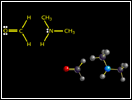 |
|
TITLE:
Mechanism of the Strecker Synthesis FORMAT: Flash MX SOURCE: Vollhardt and Schore, Organic Chemistry: Structure and Function, Fourth Edition, W. H. Freeman & Co. (More info...) |
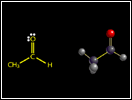 |
|
TITLE:
Mechanism of the Wittig Reaction FORMAT: Flash MX SOURCE: Vollhardt and Schore, Organic Chemistry: Structure and Function, Fourth Edition, W. H. Freeman & Co. (More info...) |
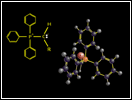 |
|
TITLE:
Superposition of Waveforms FORMAT: Java Applet (plug-in required) SOURCE: Atkins and de Paula, Physical Chemistry, Seventh Edition, W. H. Freeman & Co. (More info...) |
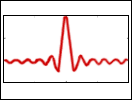 |
|
TITLE:
The Fermi-Dirac Distribution FORMAT: Java Applet (plug-in required) SOURCE: Atkins and de Paula, Physical Chemistry, Seventh Edition, W. H. Freeman & Co. (More info...) |
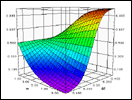 |
